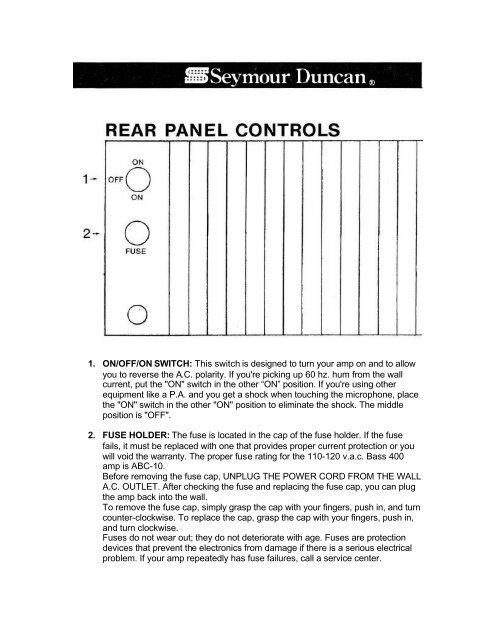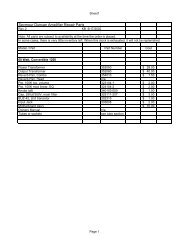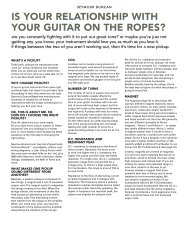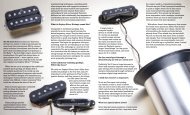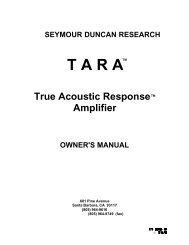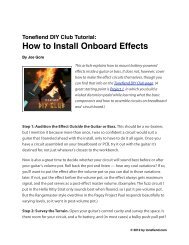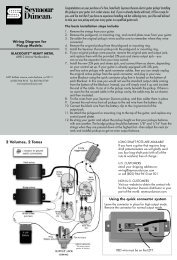You also want an ePaper? Increase the reach of your titles
YUMPU automatically turns print PDFs into web optimized ePapers that Google loves.
1. ON/OFF/ON SWITCH: This switch is designed to turn your amp on and to allow<br />
you to reverse the A.C. polarity. If you're picking up 60 hz. hum from the wall<br />
current, put the "ON" switch in the other “ON” position. If you're using other<br />
equipment like a P.A. and you get a shock when touching the microphone, place<br />
the "ON" switch in the other "ON" position to eliminate the shock. The middle<br />
position is "OFF".<br />
2. FUSE HOLDER: The fuse is located in the cap of the fuse holder. If the fuse<br />
fails, it must be replaced with one that provides proper current protection or you<br />
will void the warranty. The proper fuse rating for the 110-120 v.a.c. <strong>Bass</strong> <strong>400</strong><br />
amp is ABC-10.<br />
Before removing the fuse cap, UNPLUG THE POWER CORD FROM THE WALL<br />
A.C. OUTLET. After checking the fuse and replacing the fuse cap, you can plug<br />
the amp back into the wall.<br />
To remove the fuse cap, simply grasp the cap with your fingers, push in, and turn<br />
counter-clockwise. To replace the cap, grasp the cap with your fingers, push in,<br />
and turn clockwise.<br />
Fuses do not wear out; they do not deteriorate with age. Fuses are protection<br />
devices that prevent the electronics from damage if there is a serious electrical<br />
problem. If your amp repeatedly has fuse failures, call a service center.


